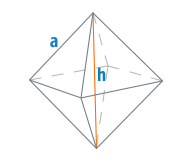Semi-metal tungsten telluride - Swiss nanotechnology day knife
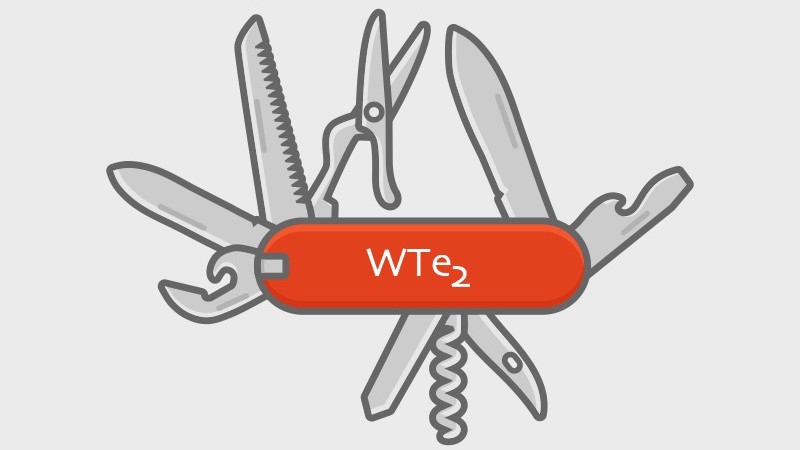
In today's world, it is difficult to surprise someone with a cell phone, from which you can exclusively make calls and send SMS. Now everyone wants everything in one bottle: calls from anywhere in the world, a cool camera for shooting 4k video, an impenetrable case and a battery, which is enough for half a life. This principle applies not only to daily use items, but also to chemical elements. Many scientists are searching for the most versatile elements, alloys, compounds, etc., which combine the most polar properties. Today we will get acquainted with a study in which scientists proved that tungsten telluride (WTe 2 ) has natural metallicity and ferroelectricity, while remaining a semimetal. What do all these twisted terms mean, why is it so amazing, and where can it be put into practice? We learn about it from the report of the research group. Go.
The basis of the study
Ferroelectric materials have a spontaneous electric dipole moment (polarization) even in the absence of an external electric field. This spontaneous electric dipole moment can repeatedly transition between two or more energy-equivalent states or directions when an external electric field is applied, which destroys the degeneracy and forms the fundamental basis of numerous technological applications of ferroelectric materials. For piezoelectricity, a non-centrosymmetric crystal structure is the only requirement.
')
But for a polar material, in addition to the non-centrosymmetry of the crystal structure, there must be a unique polar axis. In order for a material to be considered a ferroelectric, it must be polar and exhibit polarization bistability along the polar axis.
The properties of ferroelectricity are most often attributed to insulators and semiconductors, and not to metals. This is due to the fact that conduction electrons * in metals screen static static fields arising from the long-range dipole order * .
Conduction electrons * - electrons that can transfer charge in a crystal.
Long- range order * is the ordering of atoms or molecules, which is repeated at infinitely large distances, which distinguishes long-range order from near one.And here scientists transfer us to the relatively recent past. In 1965, Philip Anderson and Edward Blount published the paper “ Symmetry Considerations on Martensitic Transformations:“ Ferroelectric ”Metals? , In which they describe a new class of materials. This material, which has the characteristics of a metal with a polar axis and an asymmetric crystal structure with inversion, was called a ferroelectric metal. However, experimentally confirming these theoretical calculations under the conditions of room temperature was hitherto problematic, if not impossible.
Since the 60s a lot of water has flowed under the bridge, and the world of science has become richer. Modern studies have been able to demonstrate quite successful experimental implementations of metallic systems whose structures underwent a transition from centrosymmetry to non-centrosymmetry. Such materials include LiOsO 3 at 140 K and Cd 2 Re 2 O 7 at 200 K.
In the work we are considering today, scientists have focused their attention on bulk crystalline WTe 2 , which combined natural metallicity and ferroelectricity at room temperatures. And such a merger of characteristics, as the researchers themselves say, can be extremely useful in the development of nanotechnology.
Research results
Now let's get to the fun part. What is WTe 2 ? As we already know, it is telluride tungsten. This substance belongs to transition metal dichalcogenides, which have a variety of crystalline structures: hexagonal (2H), monoclinic (1T) and rhombic (Td).
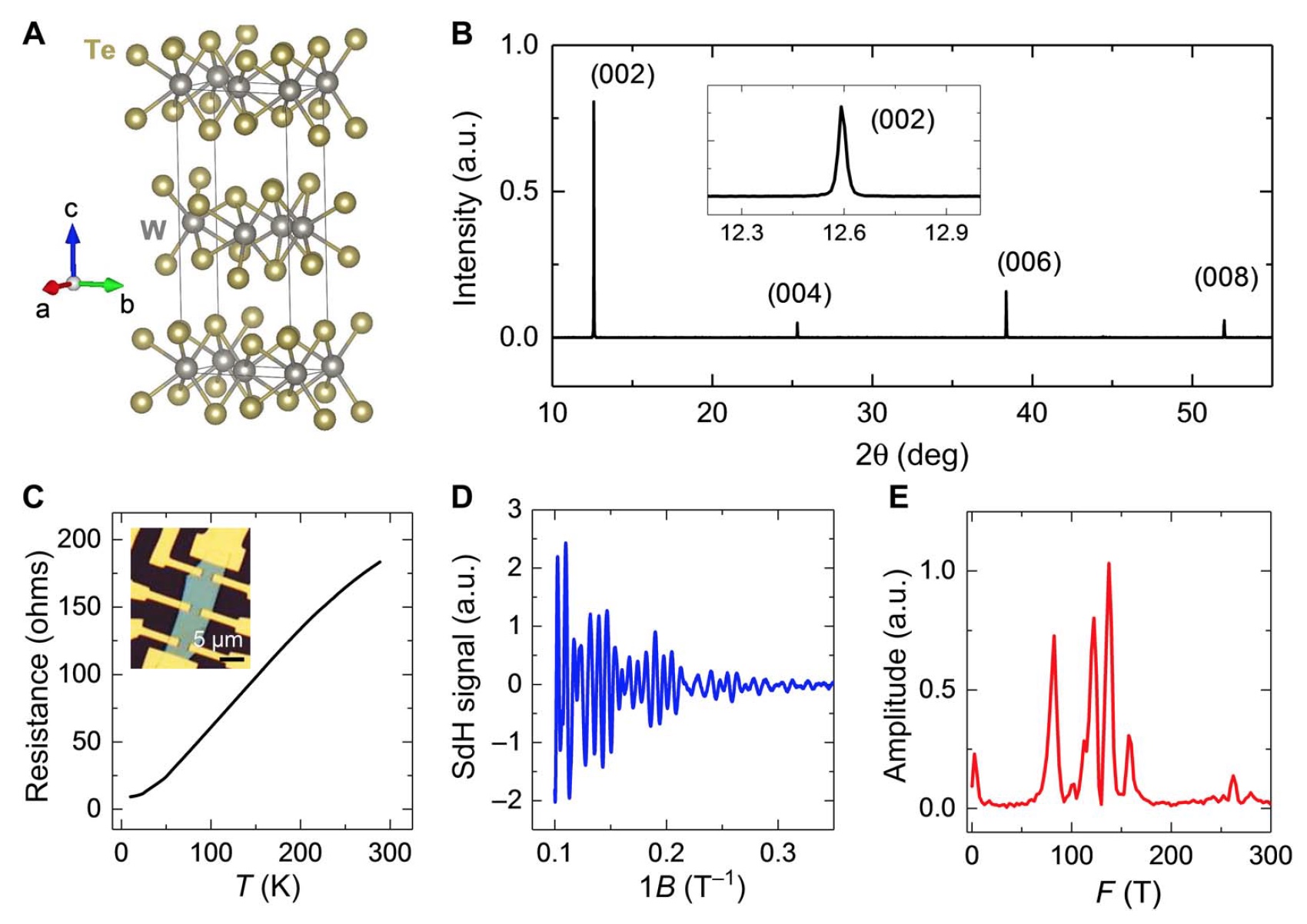
Image number 1
In the case of WTe 2, the orthorhombic crystal structure ( 1A ) takes place, in which the atoms of tungsten (W) are octahedrally coordinated by tellurium (Te) atoms, and the successive layers between them rotate by 180 °. Due to a strong intermetallic bond, tungsten atoms form zigzag chains with a slight bend, which leads to a distortion of tellurium octahedra (around each tungsten atom).
Image 1B shows an X-ray diffraction analysis of WTe 2 single crystals with orientation along the c axis. The diffraction peaks (00l) confirm the presence of the Td single-crystal phase in WTe 2 , that is, the orthorhombic crystal structure. The absence of inversion symmetry in the Td phase made it possible to identify WTe 2 as a Weyl semimetal type II.
Octahedron * - polyhedron with eight faces.
The main difference of WTe 2 from other transition metal dichalcogenides is the fact that WTe 2 is a semimetal in its ground state, and not a semiconductor.
Measurement of electric charge transfer ( 1C ) confirmed the semi-metallic ground state of WTe 2 . There is also a decrease in resistance with a decrease in temperature from room temperature to 10 K, which is typical of metal systems. And measurements of the magnetoresistance at 30 mK with a magnetic field of up to 10 T showed pronounced Shubnikov-de Haas vibrations with four fundamental frequencies ( 1D and 1E ), which serve as confirmation of the four Fermi surfaces consisting of two sets of electron and hole pockets. The presence of holes and free electrons can be the source of a very large unsaturated magnetoresistance in WTe 2 .
So, there is metallic conductivity up to 30 mK, and noncentrosymmetry, though necessary, is not enough for ferroelectricity. Given this, scientists ask the question - is a semimetallic WTe 2 with a non-centrosymmetric space group a ferroelectric?
The researchers were looking for an answer to this important question using piezoelectric power microscopy (PFM), which is excellent for studying the microstructure of domains and polarization dynamics in classical ferroelectric materials. This type of microscopy uses the reverse piezoelectric effect and detects lattice deformation due to the applied electric field.
Small single-crystal pieces of WTe 2 with a thickness of several tens of micrometers ( 2A and 2B ) appeared as the test samples.
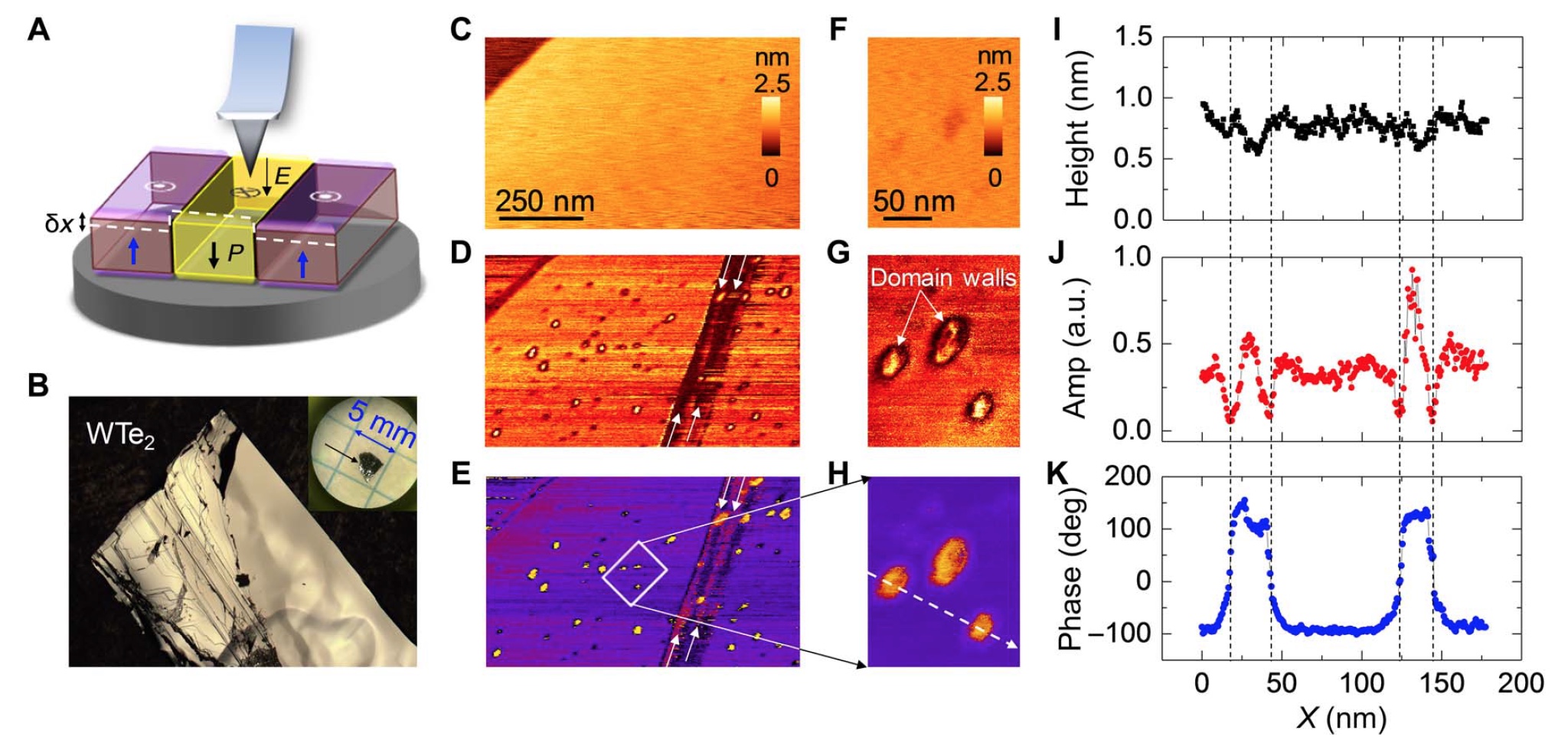
Image number 2
Measurements of all indicators were carried out at room temperature in an inert dry environment. Images 2C - 2H show images of piezoelectric power microscopy of samples that confirm the presence of antiparallel ferroelectric domains, the average size of which varies from 20 to 50 nm. The sample surface is considered to be atomic flat with a mean square roughness of ~ 0.2 nm ( 2C ). In addition to the oval domains ( 2G and 2H ), strip-like were also detected (marked with arrows in 2D ).
These observations of domains in semimetallic single crystals of WTe 2 indicate that WTe 2 not only has a polar axis (axis c ), but also has bistable polarization states, which manifest themselves as static anti-parallel domains. And this, in turn, fully proves the presence of ferroelectricity in semimetallic WTe 2 at room temperature.
An important indicator of WTe 2 is its stability. The surface of WTe 2 is quite sensitive and can be oxidized in air. Surface oxide is formed as a result of the separation of secondary bonds W – O (WO x ) and Te – O (TeO 2 ) on the surface of WTe 2 . The oxidation of WTe 2 is a self-limiting process and leads to the formation of an amorphous surface oxide layer with a thickness of about 2 nm.
Bulk crystals and relatively thick WTe 2 samples are more stable in air compared to multi-layer samples, especially with single-layer and two-layer WTe 2 . In addition, in amorphous materials there is no polar space group, and ferroelectricity cannot arise, since it exists only in crystalline materials.
An even more important attribute of ferroelectrics is the reorientation of polarization using an external electric field. The problem is that, in contrast to insulating ferroelectrics, switching polarization in WTe 2 is much more difficult because of its high conductivity: the applied bias induces an electric current, and does not affect polar distortion.
This problem can be solved by introducing a dielectric layer between the contacts, which will allow applying the electric field to WTe 2 and realize ferroelectric switching.
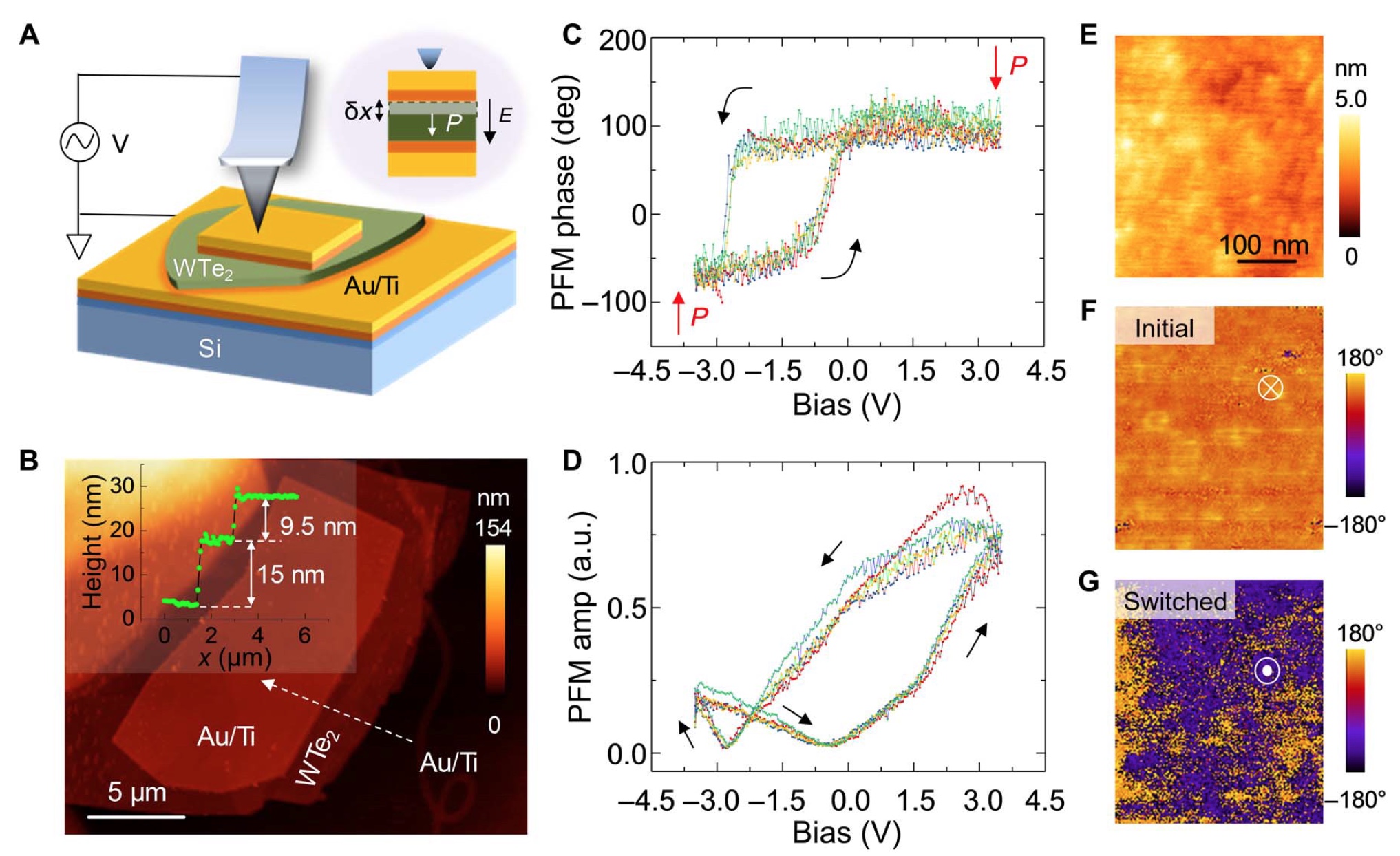
Image number 3
To achieve a similar configuration and exclude the possibility of direct introduction of charge from the tip into WTe 2 , samples of thin films with a capacitor geometry ( 3 ) were prepared. In such a structure, the current is blocked by a dielectric layer at the ferroelectric / metal interface, since the surface of the WTe 2 sample is briefly exposed to air before the metal deposition forms a very thin oxide layer.
Image 3B shows a metallized WTe 2 plate on the surface of a Ti / Au coated silicon substrate. The thickness of the plate WTe 2 is 15 nm, and the thickness of the upper metal electrode Ti / Au is 9.5 nm. Thus, the current flow is strongly attenuated in this configuration, despite the fact that the WTe 2 plate is metallic.
Now it was necessary to demonstrate that switching the WTe 2 ferroelectric polarization is real. For this, spectroscopic PFM measurements were carried out through the upper electrode in the geometry of a capacitor, which was successfully used earlier for measuring the PFM sub-electrode. The resulting piezoelectric response as a function of the applied bias ( 3C and 3D ) shows the switchable hysteresis behavior, which also occurred in traditional ferroelectrics BaTiO 3 and Pb (Zr x Ti 1-x ) O 3 .
In the 3E - 3G images, the oppositely oriented residual polarization, controlled by displacement, is clearly visible. Scientists note that such switchings between antiparallel equivalent polarization states of WTe 2 can be performed many times.
For a more detailed acquaintance with the nuances of the study (in particular with theoretical calculations) I recommend to look into the report of scientists .
Epilogue
In this work, scientists were able to implement the concept of ferroelectric metals, described as far back as 1965. Calculations and theories were confirmed by practical study of the sample, whose role was played by the Weyl semimetal WTe 2 .
Bulk crystalline WTe 2 exhibits bistable polarization states that switch under the action of an external electric field. Thus, ferroelectricity is a volume property of WTe 2 and is not limited to single-layer samples.
Scientists intend to continue to continue the study of ferroelectricity in other metallic layered materials, as they may become an important element of future nanotechnologies, in particular for ultra-low-power electronics.
Thank you for your attention, stay curious and have a good working week, guys! :)
Thank you for staying with us. Do you like our articles? Want to see more interesting materials? Support us by placing an order or recommending to friends, 30% discount for Habr's users on a unique analogue of the entry-level servers that we invented for you: The whole truth about VPS (KVM) E5-2650 v4 (6 Cores) 10GB DDR4 240GB SSD 1Gbps from $ 20 or how to share the server? (Options are available with RAID1 and RAID10, up to 24 cores and up to 40GB DDR4).
Dell R730xd 2 times cheaper? Only we have 2 x Intel TetraDeca-Core Xeon 2x E5-2697v3 2.6GHz 14C 64GB DDR4 4x960GB SSD 1Gbps 100 TV from $ 199 in the Netherlands! Dell R420 - 2x E5-2430 2.2Ghz 6C 128GB DDR3 2x960GB SSD 1Gbps 100TB - from $ 99! Read about How to build an infrastructure building. class c using servers Dell R730xd E5-2650 v4 worth 9000 euros for a penny?
Source: https://habr.com/ru/post/459286/
All Articles
